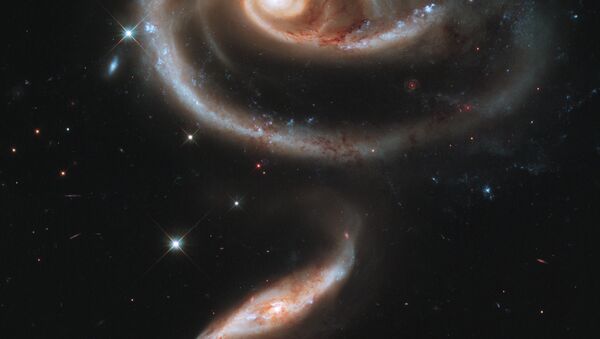The two galaxies featuring in the newly released picture by the Hubble Space Telescope, are part of a system that goes by the name of Arp 256, which is around 350 million light years from Earth and lies in the constellation Cetus, or the Whale.
This is what the European Space Agency (ESA) wrote below the image:
"The galaxies are ablaze with dazzling regions of star formation: The bright blue fireworks are stellar nurseries, churning out hot infant stars."
Join 8 people right now at "Hubble Telescope Spies Gorgeous Galaxy Merger (Video, Photo)" #cheers #videos #video #learning #space-science #astronomy #spacescience #telescope #gorgeous #merger #galaxy #hubble #spies #photo https://t.co/Mww4suHmx7 pic.twitter.com/2plIU7xXDF
— Michael Davis (@cheers_videos) 11 марта 2018 г.
The merger appears to have just started, with the two galaxies going on to come together for millions of years before they eventually form a unified structure, ESA, which collaborates with NASA in the Hubble project, pointed out.
Energetic bursts of new life, as observed in the picture, are caused by "massive gravitational interactions," which "stir up interstellar gas and dust" which further gives birth to stars.
Such galactic mergers do not usually come as a surprise. Our own Milky, notably, might already have a few under its belt, and it might be getting ready for another dramatic crash, since the neighboring Andromeda galaxy is about 4 billion years away.

